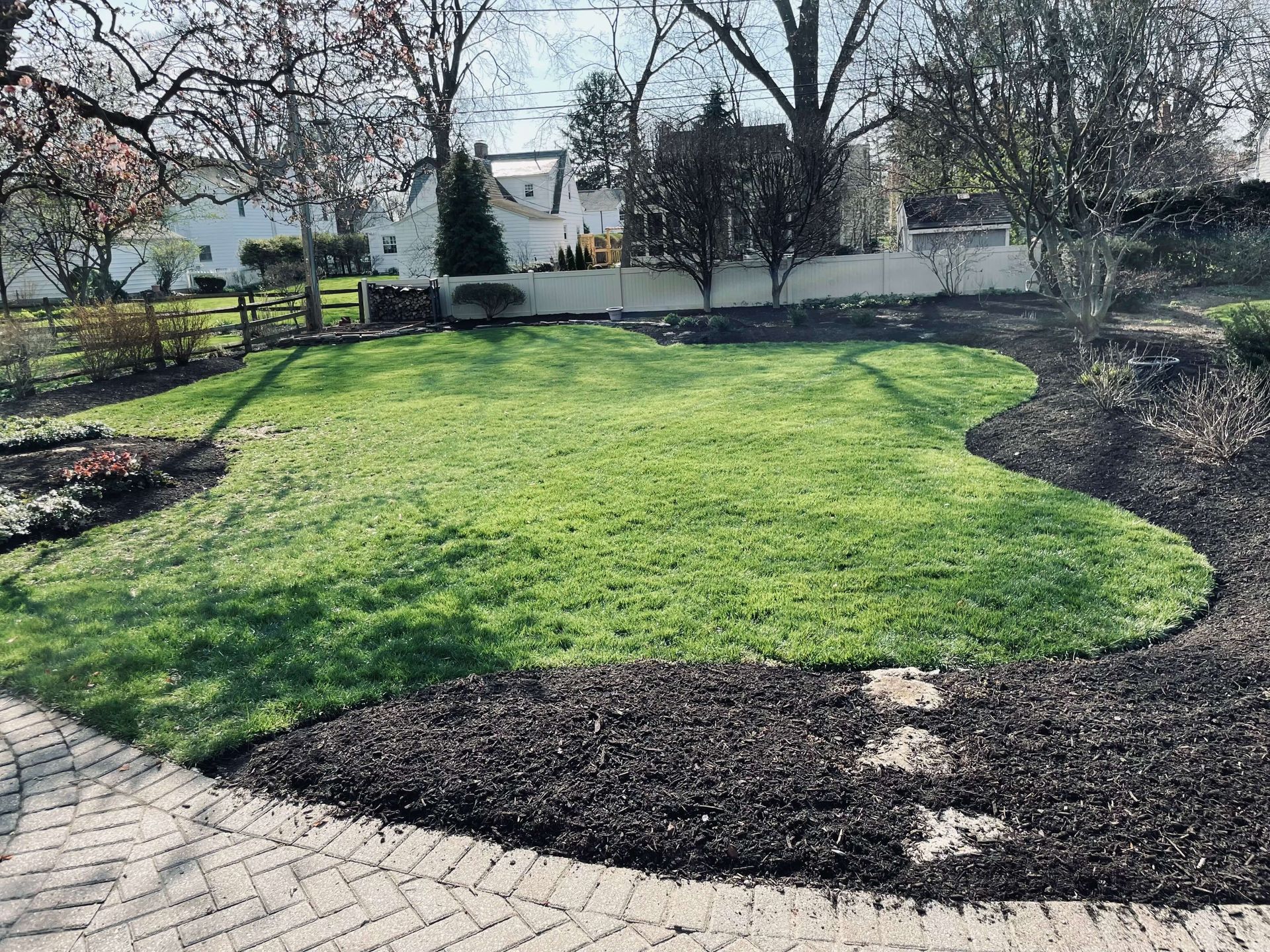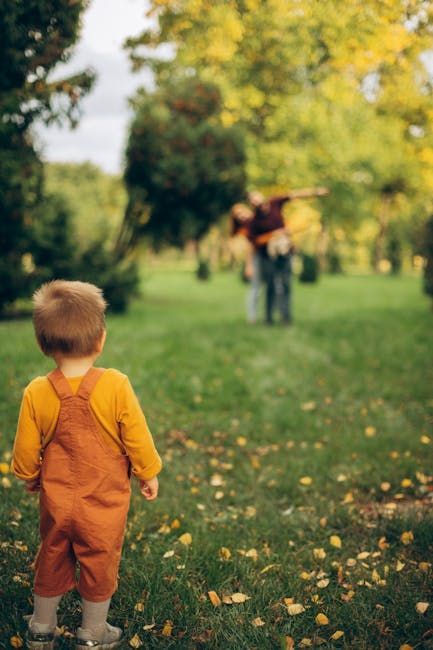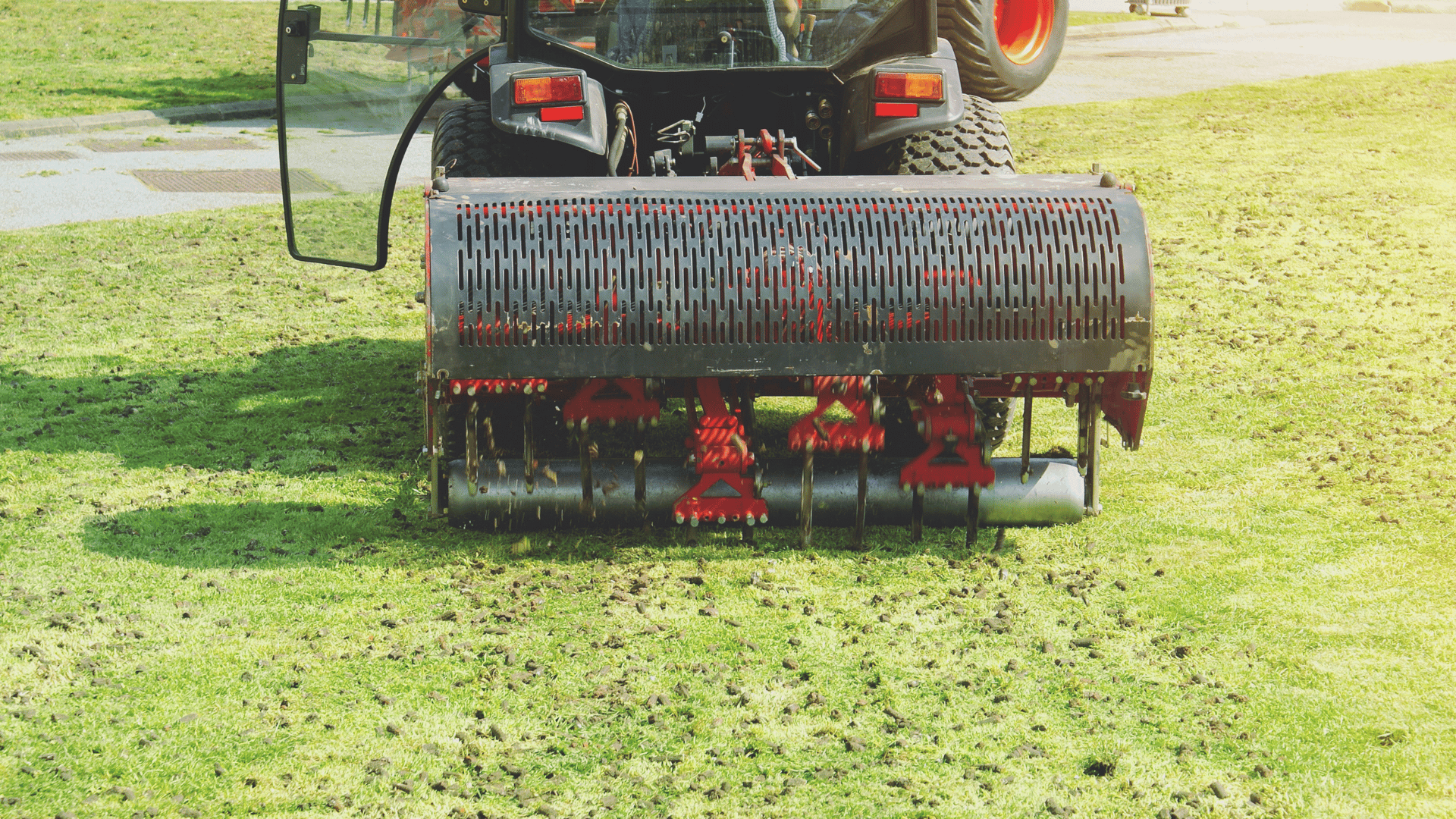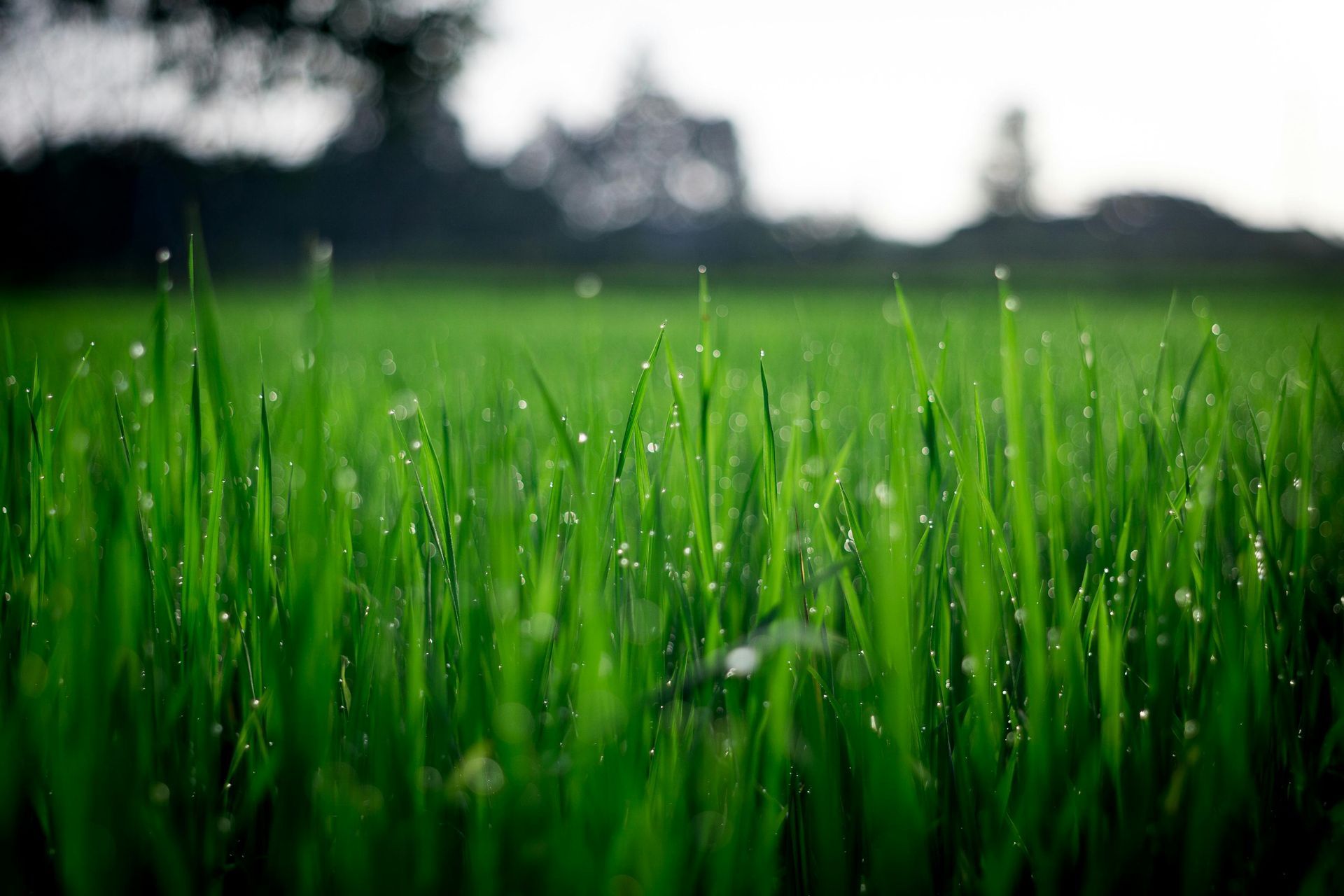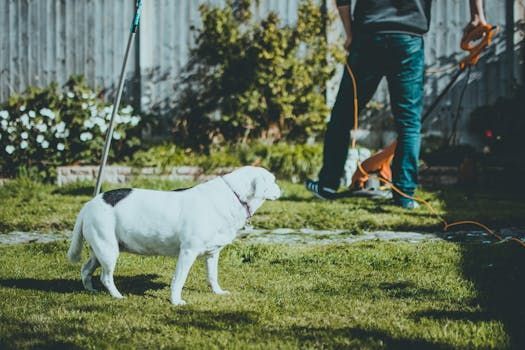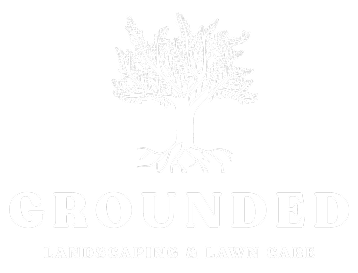Why Your Columbus Lawn Dies Every Summer (And How to Fix It)
By Lucas Colburn, Founder of Grounded Landscaping & Lawn Care
Every July, I get the same frantic phone calls from Columbus homeowners: "Lucas, my lawn was beautiful in spring, but now it's brown and dying. What's happening?"
After caring for over 500 Columbus lawns, I've seen this pattern repeat year after year. The truth is, your lawn isn't dying because of bad luck or poor genetics—it's struggling against a perfect storm of Central Ohio conditions that most homeowners don't understand.
Here's what's really happening to your lawn, and more importantly, how to fix it.
The Columbus Summer Death Trap
Columbus presents a unique challenge that separates us from other cities. We don't just have hot summers—we have hot AND humid summers, combined with clay soil that acts like concrete. This deadly combination creates conditions that stress even the toughest grass varieties.
Problem #1: The Clay Soil Stranglehold
Most Columbus properties sit on heavy clay soil, which creates a host of problems for your lawn. Clay soil becomes waterlogged during our spring rains, then turns rock-hard during summer heat. When clay dries out, it literally shrinks and cracks, pulling moisture away from grass roots.
Think of clay soil like a sponge that's been compressed. When soils are this "tight", necessary air, water and nutrients cannot move through them. Roots are stunted and the grass is stressed, weakened, and more prone to disease, insects and even weeds.
The Visual Signs:
- Water pools on your lawn after rain, then runs off instead of soaking in
- Soil becomes so hard you can barely push a screwdriver into it
- Grass roots stay shallow (less than 2 inches deep)
- Brown patches appear first in full-sun areas
Problem #2: The Heat-Humidity Double Punch
Columbus summers can vary, becoming hot, cooling off a little, and then becoming hot again, but the humidity rarely drops. This creates a sauna effect that's devastating for cool-season grasses like Kentucky bluegrass and fescue—the types most commonly planted in Central Ohio.
When temperatures hit 85°F+ with high humidity, your grass essentially goes into survival mode. It stops growing and starts shutting down non-essential functions. The problem? Most Columbus homeowners keep treating their stressed lawn like it's thriving, making the situation worse.
Problem #3: Wrong Grass for the Battle
Kentucky bluegrass is the primary lawn turfgrass grown in Ohio, but during hot, dry periods it tends to become dormant and lose color. If high quality is desired during the summer period, lawn irrigation is often necessary.
Here's the kicker: most Columbus lawns are planted with grass varieties that are beautiful in spring and fall but struggle in our specific summer conditions. Your lawn isn't failing—it's just fighting a battle it was never equipped to win.
The Fix: A Columbus-Specific Battle Plan
The good news? Once you understand what you're fighting, you can win. Here's my proven approach that's saved hundreds of Columbus lawns:
Step 1: Emergency Summer Adjustments (Do This Now)
Raise Your Mowing Height Immediately
Set your mower to around 3", or, as an easy rule of green thumb, just set your mower to its highest setting. Longer grass better retains soil moisture. Taller grass also sends out deeper roots which helps it find moisture as the soil dries.
I can't tell you how many Columbus lawns I've saved just by convincing homeowners to stop scalping their grass. That extra inch of height acts like a natural umbrella, protecting the soil and roots from our brutal summer sun.
Change Your Watering Strategy
Most Columbus homeowners water too frequently and too shallow. Instead:
- Water deeply 2-3 times per week (never daily)
- Water in early morning (6-8 AM) before the heat kicks in
- Apply 1-1.5 inches per week, including rainfall
- Break up your watering into smaller cycles. If you normally water your lawn for 15 minutes, break it up into three five-minute cycles that are spaced about an hour apart. This gives the ground time to soak it in
Step 2: Attack the Clay Soil Problem
This is where most Columbus homeowners give up, but it's actually the most important fix for long-term success.
Core Aeration (Fall Priority)
Aeration is the process of pulling out small soil cores to allow water, oxygen and nutrients to penetrate the root zone. The best time to aerate your lawn is in the fall. For Columbus clay soil, this isn't optional—it's survival.
I recommend core aeration every single year for Columbus lawns. The clay soil recompacts naturally, so this needs to be an annual ritual.
Organic Matter Integration
Start using an organic fertilizer throughout the season and keep the lawn clippings on the lawn. Make sure you water your lawn and keep it from drying out. A bone dry clay soil is going to be rock hard and not allow water/nutrients to get into the rootzone.
This is a marathon, not a sprint. It does take a long time to completely amend your soil. This is not a one time thing but a complete change of routine for your lawn. Doing this year after year will help your clay soil drastically and give you a much stronger and healthier lawn.
Step 3: Choose the Right Grass for Columbus
If you're planning to overseed or establish new areas, grass selection is critical for Columbus success.
For Sun Areas: Tall Fescue is extremely drought and heat tolerant, so your lawn will remain greener in hot summers. Turf-type tall fescue tolerates compacted soils and has a drought tolerance suitable to endure Ohio's droughts with no need for irrigation.
For Mixed Sun/Shade: A mix that contains Kentucky bluegrass and fine fescue takes advantage of their tolerance to shade and drought.
Timing is Everything: Sowing is best done when the soil temperatures fall somewhere between 50 and 65 degrees. Planting cool season grasses in late summer/early fall creates thicker, denser lawns.
The Columbus Lawn Care Calendar
Here's when to take action for maximum impact:
March-April:
Apply pre-emergent crabgrass control, begin spring fertilization
May:
First aeration (if soil is compacted), overseed thin areas
June-August:
Raise mowing height, deep watering schedule, avoid fertilizing during extreme heat
September-October:
CRITICAL MONTH
- Core aeration, overseeding, fall fertilization
November:
Final mowing, leaf management
Common Mistakes That Make It Worse
I see these mistakes destroy Columbus lawns every summer:
- Cutting grass too short - Scalping exposes soil and roots to sun damage
- Daily light watering - Creates shallow roots that can't survive heat
- Fertilizing in extreme heat - Burns stressed grass
- Ignoring clay soil - Fighting symptoms instead of the root cause
- Wrong grass variety - Planting sun grass in shade or vice versa
When to Call for Professional Help
Some situations require professional intervention:
- Soil compaction so severe that water runs off completely
- Large areas of dead grass (more than 30% of lawn)
- Recurring fungal diseases
- Drainage issues causing standing water
- If you've tried these steps for two seasons without improvement
Your Next Step
The best lawns in Columbus aren't accidents—they're the result of understanding our unique challenges and working with them, not against them.
Start Here: Assess your current situation honestly. Walk your lawn and identify:
- Areas where water pools or runs off
- Spots where you can barely push a screwdriver into the soil
- Grass height (measure it—you might be cutting shorter than you think)
- Sun/shade patterns throughout the day
This Week: Raise your mowing height and adjust your watering schedule. These two changes alone can save a struggling lawn.
This Fall: Schedule core aeration and overseeding. This is your chance to set your lawn up for success next summer.
The Bottom Line
Your Columbus lawn doesn't have to die every summer. With the right approach—one that acknowledges our clay soil, humidity, and heat challenges—you can have the healthiest lawn in your neighborhood.
The secret isn't spending more money or trying harder. It's understanding what you're working with and making strategic changes that work specifically in Central Ohio.
Ready to save your lawn this summer? Don't let another season pass watching your beautiful spring lawn turn brown and patchy. At Grounded Landscaping & Lawn Care, we specialize in helping Columbus homeowners overcome our unique clay soil and climate challenges.
Get professional help with:
- Core Aeration Services - Break through that clay soil barrier
- Expert Lawn Mowing - Proper height and technique for Columbus conditions
- Complete Lawn Care Programs - Year-round maintenance tailored to Central Ohio
Take the first step: Contact us today for a free consultation. We've helped over 500 Columbus-area homeowners win the battle against summer lawn death, and we're ready to help you create the healthiest lawn in your neighborhood.
Serving Upper Arlington, Dublin, Powell, New Albany, Clintonville, Grandview, German Village, Westerville, Gahanna, Bexley, Hilliard and surrounding Columbus communities.
